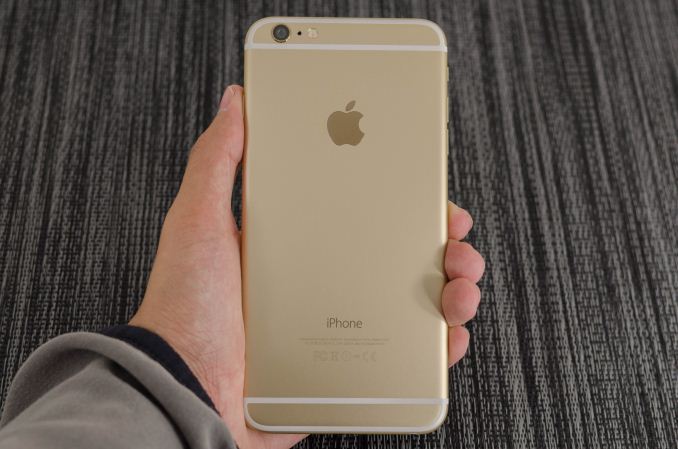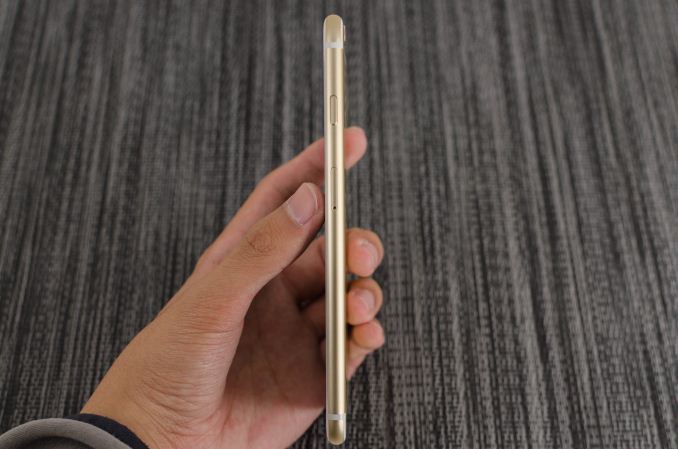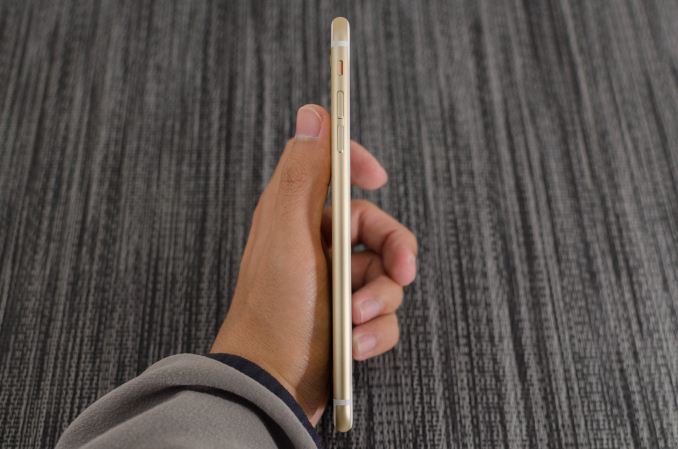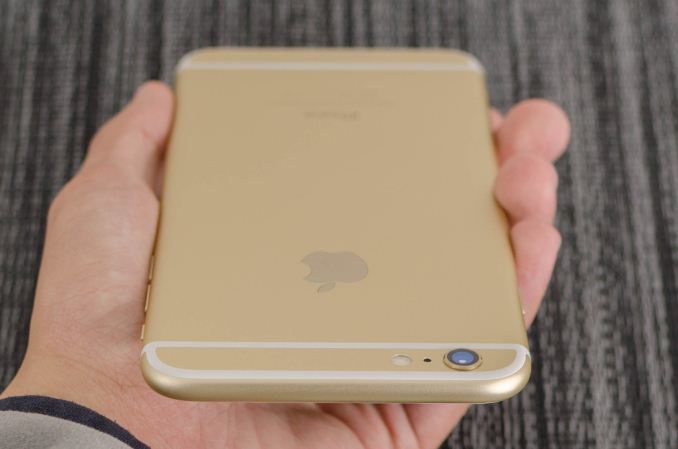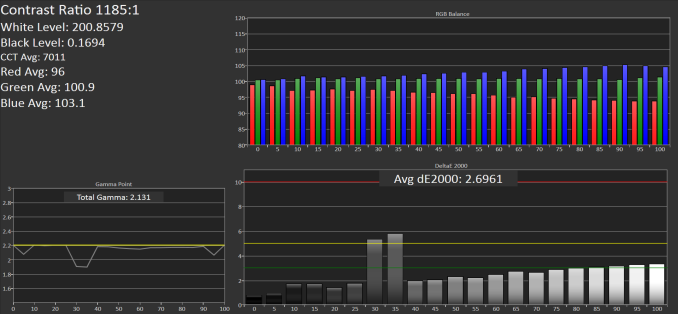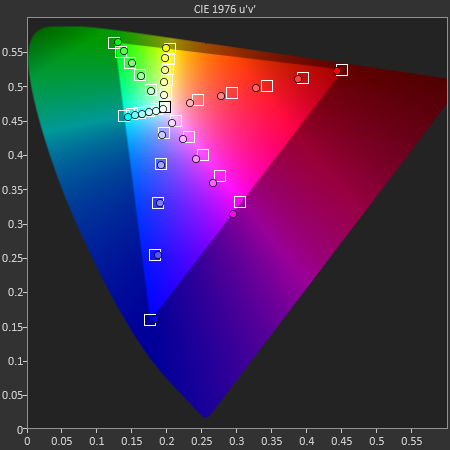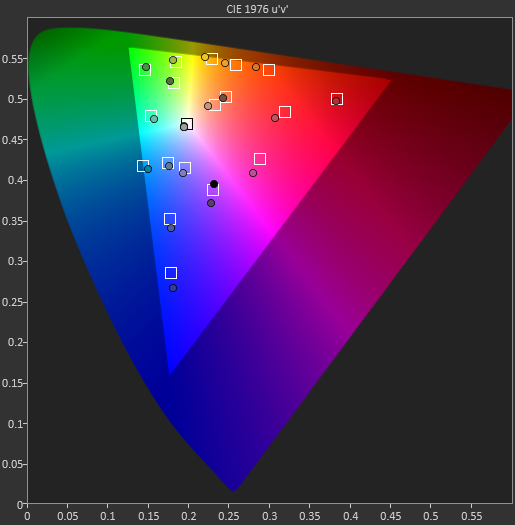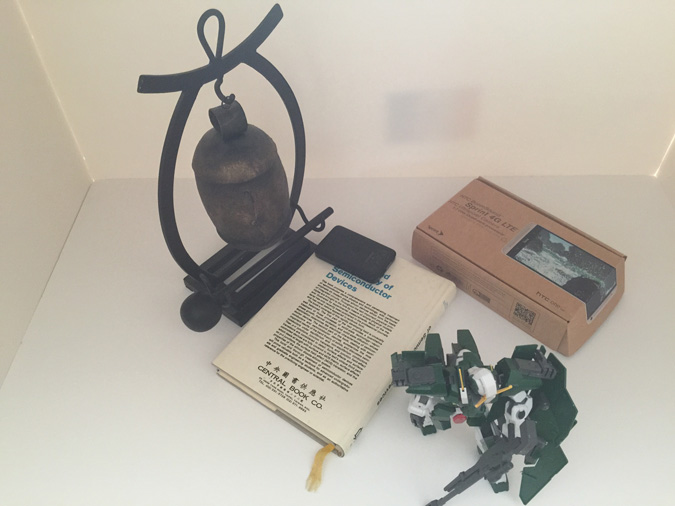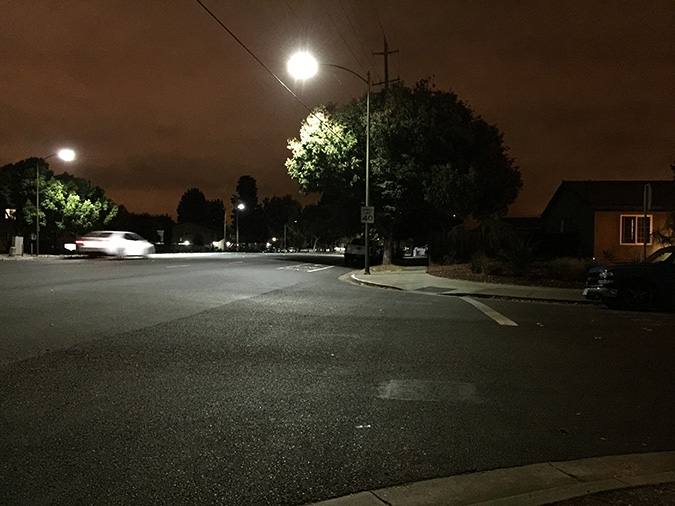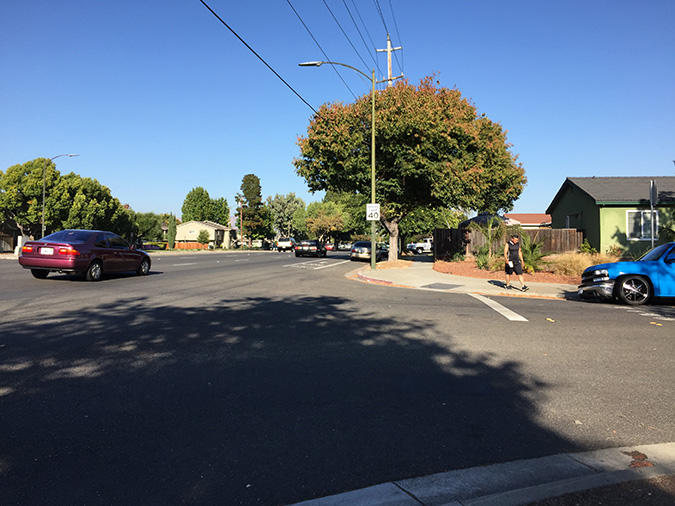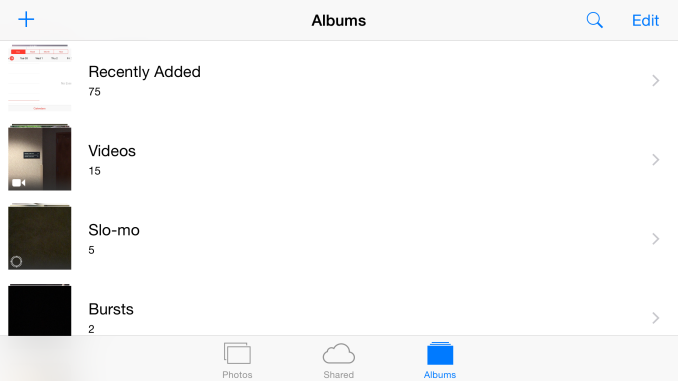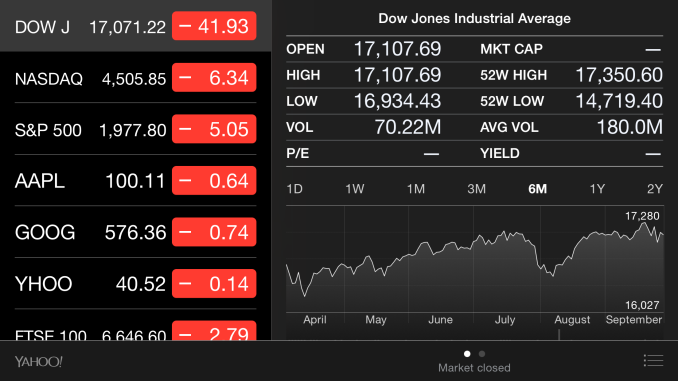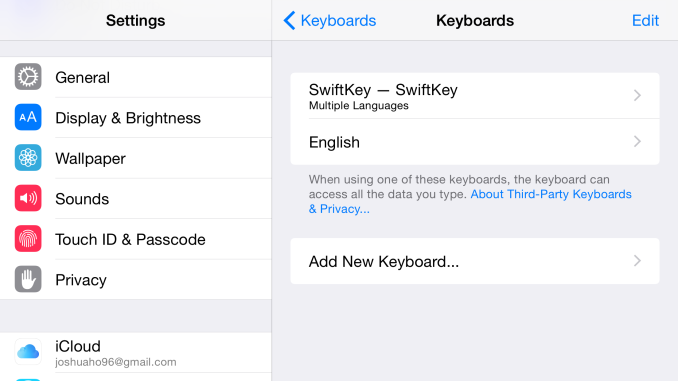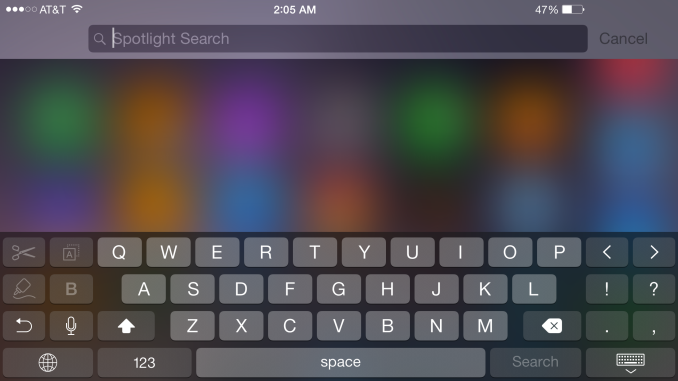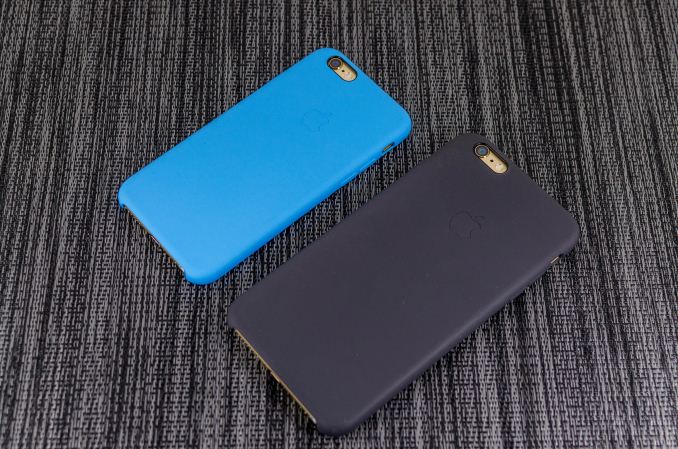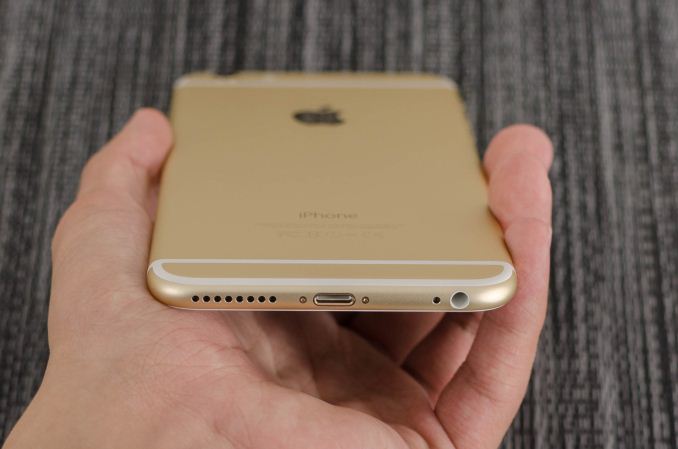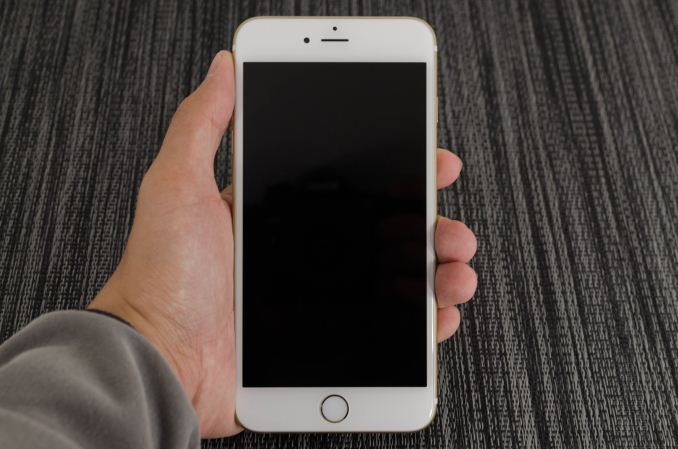
Original Link: https://www.anandtech.com/show/8572/the-iphone-6-plus-review-apples-first-phablet
The iPhone 6 Plus Mini-Review: Apple's First Phablet
by Joshua Ho on September 30, 2014 8:00 AM EST- Posted in
- Apple
- Smartphones
- Mobile
- iOS
- iPhone 6 Plus
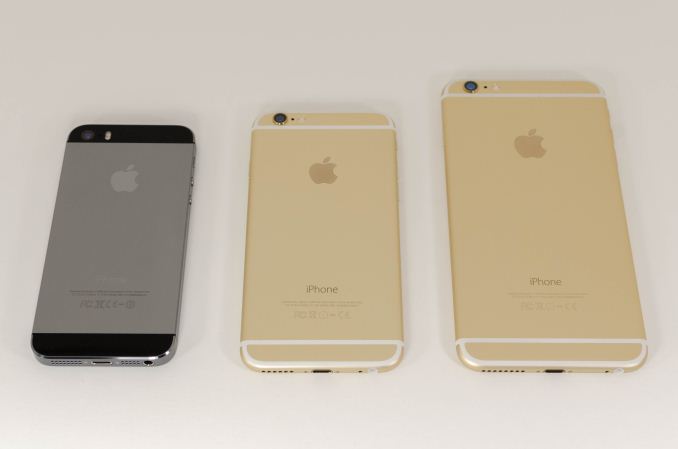
While we’ve also written about the iPhone 6, the iPhone 6 Plus needs its own review in order to really understand the various features of the device that would otherwise be buried in the context of the iPhone 6. Without question, this device represents a significant departure from the way Apple has competed in the smartphone space. Until now, Apple hasn't competed in the phablet space and has thus avoided competing with Galaxy Note line that has been established as the dominant phablet for the past 3-4 generations. As a result, Apple occupies a fast-follower position at best.
This brings us to the iPhone 6 Plus, which really is an extension of the iPhone 6. Both phones share the same SoC, NAND configurations, front and rear camera sensors, LED flash module, industrial/material design, TouchID home button, earpiece and speaker configuration, WiFi/BT chipset, modem, and button layout. At this point, I’m going to stop listing similarities because the iPhone 6 Plus is interesting for its differences. Unlike similarities, the differences are simple. The iPhone 6 Plus is bigger, the display has higher pixel density, the camera has optical image stabilization, and iOS 8 has new app designs to take advantage of the larger screen. The iPhone 6 Plus is also more expensive, with the 16GB version starting at the same price as the 64GB version of the iPhone 6.
While I’ve already discussed the design of the iPhone 6, it’s important to see whether the same design translates to the iPhone 6 Plus. To this end, the iPhone 6 Plus does well. While the angular design of the iPhone 5 line would have looked and felt enormous in the hand, the shape is quite similar to the iPad line and is similarly comfortable in the hand, although the rounded edge really differentiates it, as does the control scheme. The only real issue here is that the top bezel on the front becomes surprisingly large, and this seems to contribute to a sense that the phone is top-heavy even though the phone is evenly balanced.
| Apple iPhone 5s | Apple iPhone 6 | Apple iPhone 6 Plus | |
| SoC | Apple A7 | Apple A8 | Apple A8 |
| Display | 4-inch 1136 x 640 LCD | 4.7-inch 1334 x 750 LCD | 5.5-inch 1920 x 1080 LCD |
| WiFi | 2.4/5GHz 802.11a/b/g/n, BT 4.0 | 2.4/5GHz 802.11a/b/g/n/ac, single stream, BT 4.0, NFC | |
| Storage | 16GB/32GB/64GB | 16GB/64GB/128GB | 16GB/64GB/128GB |
| I/O | Lightning connector, 3.5mm headset | ||
| Size / Mass |
123.8 x 58.6 x 7.6 mm, 112 grams |
138.1 x 67 x 6.9 mm, 129 grams |
158.1 x 77.8 x 7.1 mm, 172 grams |
| Camera |
8MP iSight with 1.5µm pixels Rear Facing + True Tone Flash 1.2MP f/2.4 Front Facing |
8MP iSight with 1.5µm pixels Rear Facing + True Tone Flash 1.2MP f/2.2 Front Facing |
8MP iSight with 1.5µm pixels Rear Facing + True Tone Flash + OIS 1.2MP f/2.2 Front Facing |
| Price |
$99 (16GB), $149 (32GB) on 2 year contract |
$199 (16GB), $299 (64GB), $399 (128GB) on 2 year contract |
$299 (16GB), $399 (64GB), $499 (128GB) on 2 year contract |
Overall, even though the iPhone 6 Plus is noticeably taller than the Galaxy Note 3 both feel similar in size. The iPhone 6 Plus is on the thinner side which makes a significant impression in the hand. At any rate, it’s physically impossible for me to use this device with one hand for most situations. It’s definitely a tablet in this sense, but in a much more compact and pocketable form factor.
"Bendgate"
Of course, drawing the comparison between the iPhone 6 Plus and Galaxy Note 3 inevitably raises the question of “bendgate”, which draws interesting parallels with “scuffgate” from the iPhone 5 generation. Unfortunately, I can’t destroy multiple review units in order to thoroughly investigate this issue. However, we can look at Consumer Reports’ data and come to a few conclusions about this problem. The first is that in the case of the iPhone 6 Plus, there appears to be an area near the bottom of the volume buttons that is a weak point as we see a clear failure of the casing in this area.
However, it seems that there is a significant amount of force needed in the first place in order to cause permanent deformation. Otherwise, everything that we’ve seen is primarily the result of fundamental differences between the two materials. It’s clear that in the case of the Galaxy Note 3 that a great deal of the structural rigidity is tied to the display itself, so the case doesn’t quite provide much in the way of protection as the polymer used is clearly in the elastic region all the way to failure. LG seems to have a different design though, as their polymer material has a clear case of brittle failure at the limit, which saved the display from shattering.
It's certainly possible to bend the iPhone 6 Plus (or really any phone or tablet), but the real issue here that hasn’t been addressed is the level of force needed to cause a certain level of elastic or plastic deformation in the material. This matters far more when discussing drop protection as the level of force in such a scenario is relatively small but applied over an extremely short period of time. There’s also no mention of force per unit area in any of these figures, so we can’t really have a serious discussion about this issue without the necessary data.
Battery Life
One of the big draws of the larger form factor is battery life. Due to fundamental scaling issues, a bigger phone should be able to achieve greater battery life than a small one. This is because a smartphone's PCB generally remains constant in size, so it becomes an increasingly smaller proportion of the overall device size. This leaves increasingly large areas where batteries fill in the gap. In order to quantify just how big of a difference this makes when going from 4.7" to 5.5", we turn to our standardized battery life test suite. For those unfamiliar with our testing, the display is calibrated to 200 nits and all background tasks are disabled in order to ensure that only the foreground task is active in our tests.
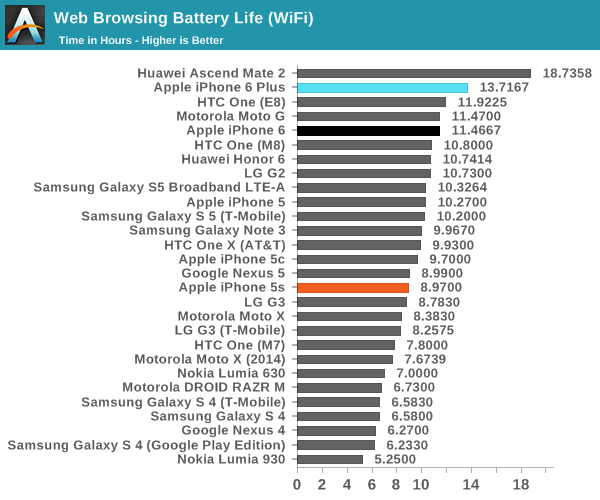
As we previously discussed, the iPhone 6 Plus performs quite admirably in the WiFi web browsing test. As expected, there's a healthy bump over the iPhone 6, but it's not quite a massive leap as a larger battery size might suggest.
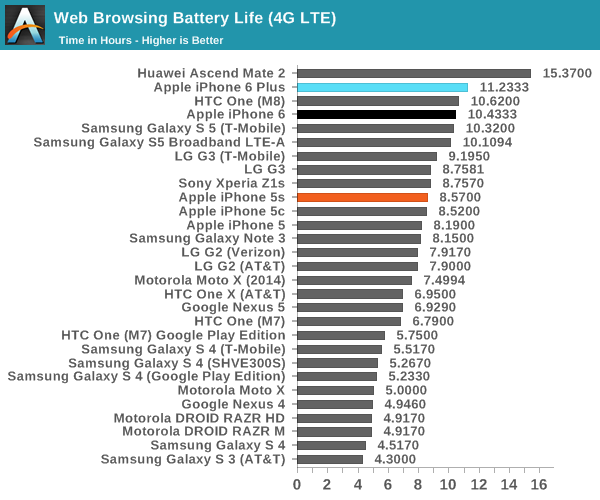
Once again, we see a similar pattern with the LTE web browsing test. Since both phones are based on the same platform, it makes sense that their results track quite closely together as we're only scaling display and battery size within the context of these tests.
However, the web browsing test is a mostly display-bound test, even if there is an SoC efficiency aspect that can make a significant difference. In order to better test SoC efficiency and get an idea of the dynamic range that a phone has in battery life, we turn to our compute-bound tests. Unfortunately, Basemark OS II stops the test too early due to low battery notifications in iOS, so we cannot use that test for a proper comparison to other phones.
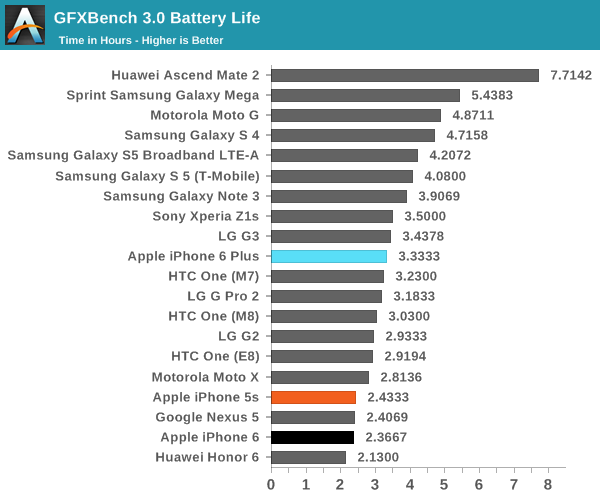
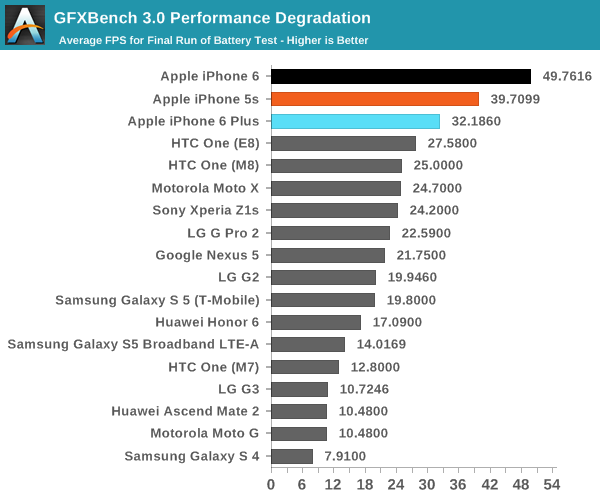
As shown in these charts, the iPhone 6 Plus manages to sustain a significant boost in battery life when compared to the iPhone 6, and performance is almost identical as well. It seems that the iPhone 6 Plus begins to throttle towards the end of the test simply because it has more time to generate heat rather than any real difference in cooling, as skin temperatures were also around 43C on the iPhone 6 Plus in this test. It's also important to note that the iPhone 6 Plus is rendering at 2208x1242 internally in order to keep proper scaling with the 163 points per inch system that iOS has, which accounts for part of the performance delta.
Overall, battery life on the iPhone 6 Plus ranges between about 20% higher to 40% higher depending on the balance of display power and SoC/baseband power in any given situation. Heavily display-bound situations will be closer to the 20% higher figure while more SoC-bound tasks will tend toward 40% or even higher. Purely idle situations should see even greater improvements as any situation where the display is off will see linear scaling with battery size.
Charge Time
Charge time is one of the key metrics for getting a holistic picture of battery life, as it's impossible to really understand whether a phone will be able to stay mobile as needed without considering recharging. In some cases such as a trade show or travel, it doesn't matter if a phone lasts 20% longer than the competition if it loses all the time gained in time spent on a charger. In order to test this, power is tracked from when the phone is connected to the charger to when it reaches the lowest power draw state on the AC adapter.
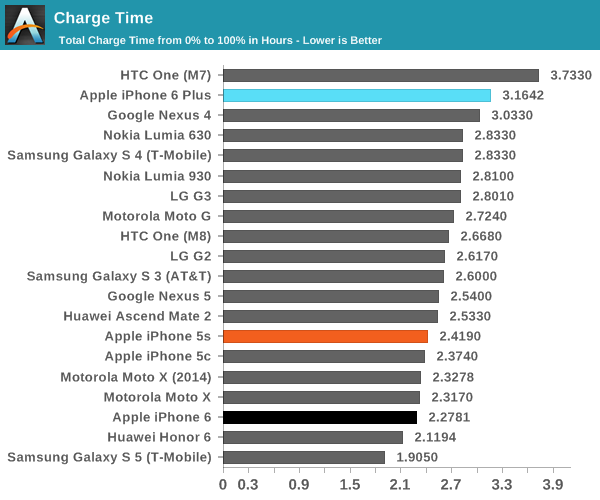
Unfortunately, the included charger is the same 5W charger that we've seen for years now. As a result, the iPhone 6 Plus is constrained by the relatively low maximum power that it can put out. Those that wish for faster charging should look into getting an iPad A/C adapter as the iPhone 6 Plus will charge faster when connected to it.
Display
While the iPhone 6 Plus’ display is largely similar to the iPhone 6’s display, there are still a few areas worth talking about. The first area is resolution, which is noticeably better on the iPhone 6 Plus on close examination. In general, there’s less aliasing that is visible on the display. While text rendering in general is even better, the improved resolution is most obvious in the rotation lock symbol, which is noticeably smoother and rounder. The use of the 2208x1242 resolution with downscaling should also have a similar effect to FSAA (Full Screen Anti-Aliasing), which will reduce the effects of aliasing on the display.
Outside of simple resolution testing, we also need to test all other aspects of the display. In order to do this, we turn to SpectraCal’s CalMAN 5 with a custom workflow. As always, we use a spectrophotometer to measure color to ensure accurate results. For this review, I won’t go over viewing angles as that’s covered in the iPhone 6 review.
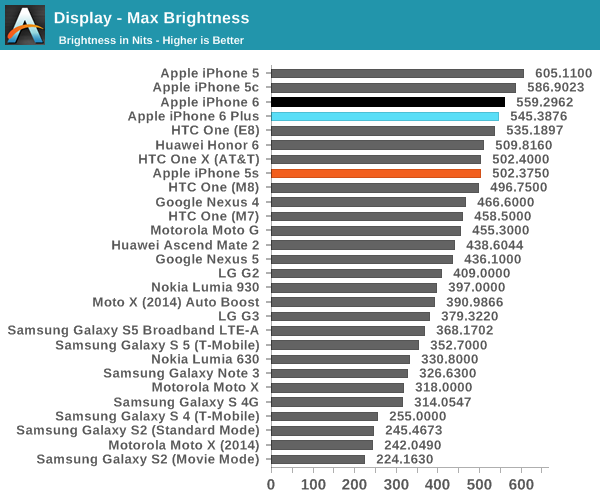
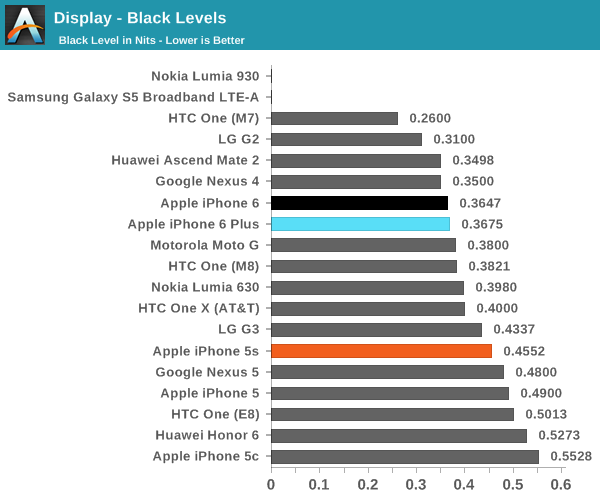
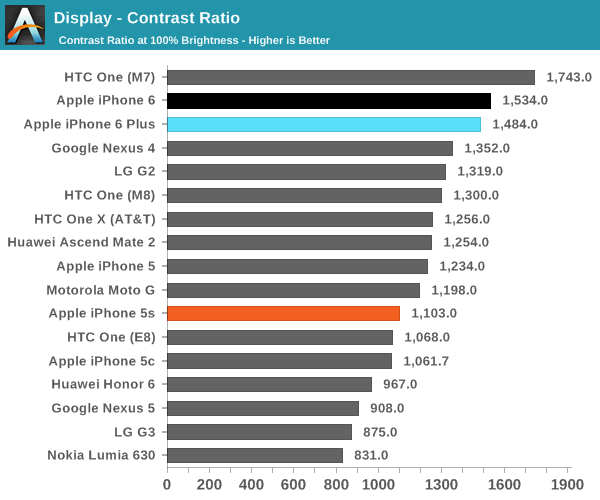
Our first test is of peak luminance and contrast. At maximum, the contrast difference between the iPhone 6 and 6 Plus is relatively small, and the difference in peak luminance is relatively small as well. I suspect that this means that Apple isn’t quite at the point where backlight luminous efficiency is rapidly falling off the way it seems to at 500+ PPI RGB LCD displays.
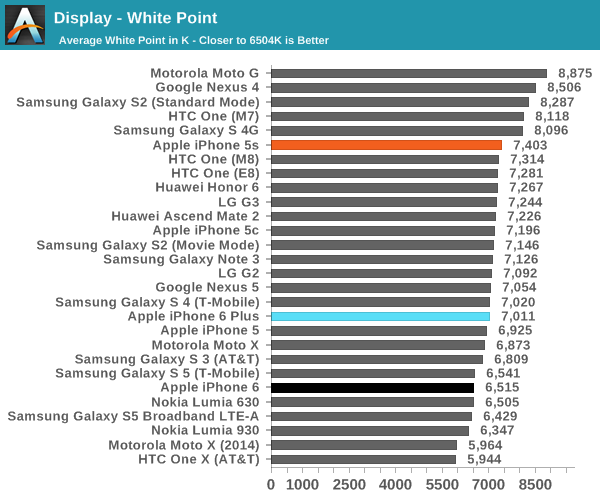
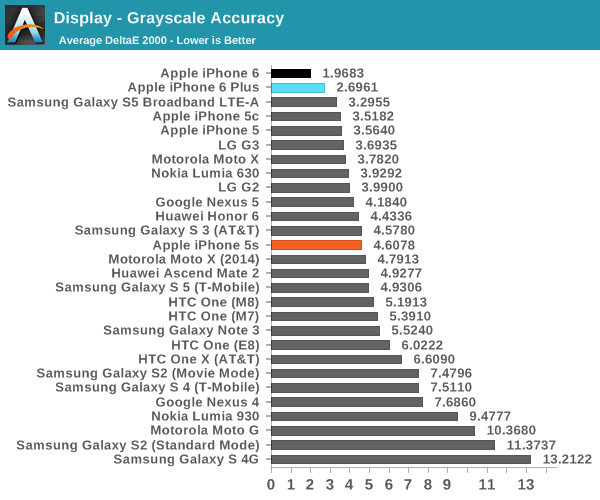
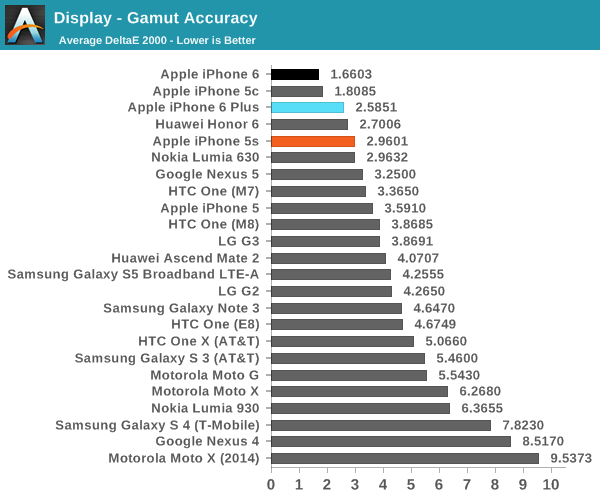
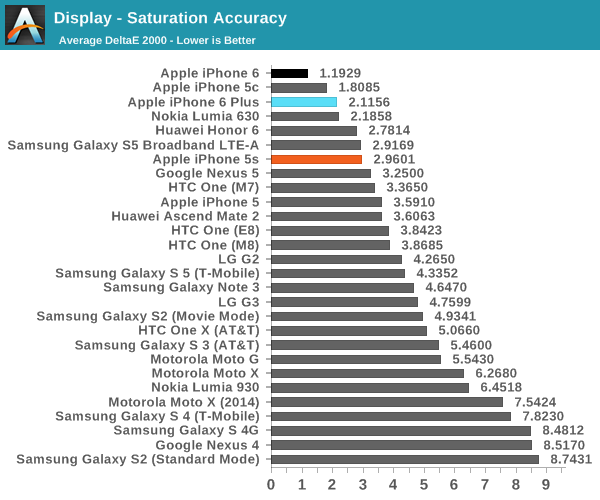
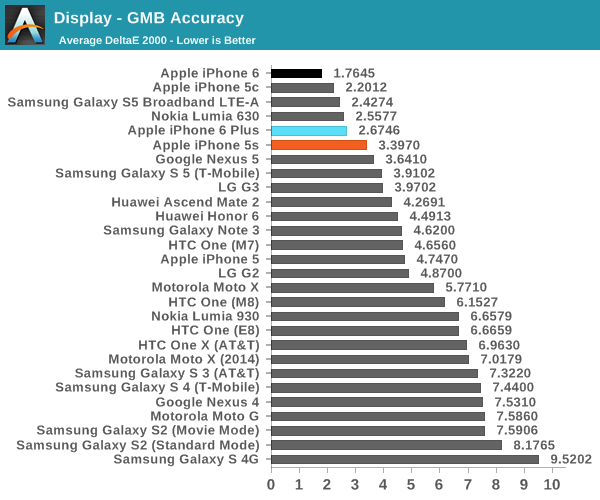
While I normally walk through each type of calibration test, there’s relatively little need in this case as the iPhone 6 Plus is close to the iPhone 6. There are some differences and the iPhone 6 is nearly perfect while the 6 Plus ends up being better than the 5s but not quite at the same level as the 6. I suspect this could be due to production variance, but these are different panels so without additional test units we can't say for certain. The iPhone 6 Plus display is quite close to the iPhone 6’s display in most regards, only larger; this is effectively as good as it gets for an LCD display.
Camera
Ultimately the change to the camera is the one difference that really sets the iPhone 6 and 6 Plus apart outside of the change in size. This one difference is optical image stabilization, or OIS. However, at first it's almost impossible to tell whether OIS is active. As someone who has used multiple cameras with OIS, this is a very odd sensation. Normally, OIS means that it's possible to see the effect of reverse accommodation in either the camera preview or while recording video, but I never saw these effects while recording video, whether in daytime or at night. In fact, I'm not even sure that video is ever optically stabilized, as seen in the videos below. I'm not sure why Apple chose to do this, as video recording is already cropped and would hide most of the odd effects that occur at the edges of the field of view when using OIS.
Putting aside OIS in video, it's obvious that the one area where OIS would be put to use is low light photography. Examining the EXIF data of low light photos, I was rather surprised to discover that in single shot mode (burst mode caps shutter speed to 1/15s) that the iPhone 6 Plus never exceeds 500 ISO. However, in order to keep pace with the iPhone 6's maximum of 2000 ISO and 1/15s exposure time, the iPhone 6 Plus drives exposure time as far as a quarter of a second, which is four times as long.
I really can't emphasize how incredible it is that Apple has pulled this off as it felt like something was wrong when I was testing low light photos as seen below. Normally, such a long exposure time entails noticeable trade-offs, but as far as I can tell motion blur is close to what I see on the iPhone 6 in low light. This seems to be the product of the multiple exposure combination that was mentioned in the keynote, and it really does work as advertised. While some benefit can be seen in the lightbox shot above, it's really in low light conditions like the photo below where we see significant benefits.
As you might expect, there's not much difference in daytime photos. I'm guessing that OIS is disabled above a certain shutter speed in order to reduce the distortion and blurriness that can come from OIS.
Software
For the most part, the iOS 8 experience on the iPhone 6 Plus is functionally identical to what you get on the iPhone 6. However, some aspects of the iPad software are also present. For example, it’s possible to rotate the home screen in any direction desired, so it’s fully possible to navigate between home screens with the phone upside down. While not quite like the iPad, there are split views in certain applications and I’m sure that this view will become common as applications are optimized for the iPhone 6 Plus. For the most part, this really helps with taking advantage of the larger screen real estate. This difference also helps make the iPhone 6 Plus feel like the combination of a tablet and phone that it should be. While Reachability is a great feature to have in a pinch, it's really not a replacement for a proper phone if one is looking for easy one-handed use most of the time.
The one issue that I found was that the stock keyboard was ergonomically difficult to use when in landscape, as seen below. While it may be simpler for first time users, I suspect much less frustration would result if all of the extra functions were moved to the center of the keyboard and a split layout was used for the main keys, similar to the iPad.
However, outside of these dedicated applications the iPhone 6 Plus is really does provide a better experience. All of the advantages that come with a tablet such as improved video, photo, and web experiences along with easier content sharing are present in the larger 6 Plus as it sits right around the point where these benefits are clearly tangible. This becomes a major selling point of the device. While the software differences are definitely smaller than what we see on the Galaxy Note line, Apple has managed to do enough that most won't notice a significant difference one way or another.
Final Words
I started this review by listing the differences that the iPhone 6 Plus has when compared to the iPhone 6, and those are really the key points so it's worth going over again. I'm starting to sound like a broken record on this, but for the areas shared with the iPhone 6 it's critical to go back to the iPhone 6 review to understand things like the A8 SoC, performance, and display.
The first key point is the display size. This is fundamentally the most important difference between the iPhone 6 Plus and iPhone 6. While there are other differences, none of them matter when compared to size. I personally found the iPhone 6 to be right around the ideal balance between screen size and one-handed usability. If you're looking for that combination, then the iPhone 6 is really the better choice, even if it doesn't get everything that the iPhone 6 Plus has. However, those that don't care about using their phone with one hand on a regular basis may find the iPhone 6 Plus starts to be a much more appealing choice.
There are really a few key advantages of the iPhone 6 Plus over the iPhone 6 once the size issue is settled. The first is the camera. While rarely active, optical image stabilization has made it possible to achieve far better photos in almost any situation where longer shutter speeds can be used. Apple has really made it painless to take long exposures, as even a quarter of a second doesn't incur significant motion blur due to the multiple exposures combined for each photo. Even though this seems to be the only application of OIS, Apple has managed to make the overall camera experience better in a way that no other OEM has.
The next advantage is battery life. While the iPhone 6 has competitive battery life, the iPhone 6 Plus manages to extend Apple's lead while also maintaining the same thin and light profile that we see on the iPhone 6. The difference in battery life can be quite significant, especially in compute-bound cases where battery life scales mostly linearly with battery size.
The final advantage is resolution. While the iPhone 6 Plus does have a bigger display and all the advantages that come with the bigger screen, Apple has also provided an even higher pixel density than before with the iPhone 6 Plus. It's certainly not as incredibly high as what we see in phones like the LG G3, but the improved pixel density is clearly visible. There are performance trade-offs in GPU-based benchmarks, but otherwise Apple has managed to make this bump in resolution compromise-free. I definitely notice the improved resolution, but this is a mostly subjective area that requires personal experience to judge whether the higher resolution has value.
Overall, the iPhone 6 Plus is a great phone that builds on the foundation of the iPhone 6. Whether it's right for you will be based primarily on whether you want the larger display or not. Once again, it's pretty easy to see the strength of Apple's integrated hardware and software approach as it's only a matter of time before most applications take advantage of the iPhone 6 Plus' additional screen size. However, comparisons between the iPhone 6 and 6 Plus are mostly pointless as they fall into distinctly different categories with different target audiences. There's also relatively little value to testing the iPhone 6 Plus against the Note 3 as this would give the iPhone 6 Plus a massive lead due to differences in time of launch. The iPhone 6 Plus must be compared to the Galaxy Note 4, which looms large on the horizon as Samsung has consistently succeeded in holding on to their first-mover advantage in the phablet market. If you have to buy a phablet now though, the iPhone 6 Plus is the best one available.

